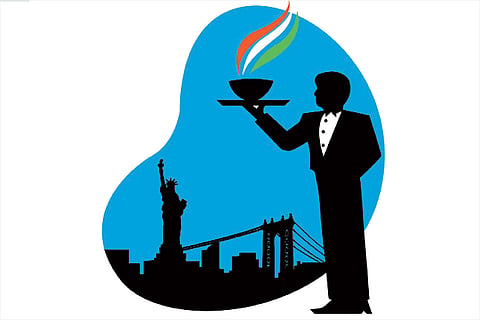When my wife and I first arrived in New York in the autumn of 1971 as newly-weds, there couldn’t have been more than a dozen Indian restaurants in all of Manhattan. Not one of them was any good. The best of the bad lot was Nirvana, appropriately placed right on top of a skyscraper overlooking Central Park—as things stood, it was better known for its magnificent view than for its cuisine. Matters improved when the Gaylord chain opened a branch uptown and the Tatas followed with Raga at Rockefeller Centre. Today you will find better Indian restaurants in New York than in Mumbai or Delhi, at least in my book. A degchi-ful of top chefs has been lured away from India with better salaries, sometimes even partnerships. And yes, they have better quality of meat—and often even vegetables—to work with.
Back then, the only place we could buy Indian spices was, strangely enough, in Armenian grocery shops in the gritty end of Lexington Avenue. The Armenians left long ago and the strip is now known as Curry Hill due to the preponderance of cheap restaurants run by Indians, Pakistanis and Bangladeshis, all of them coexisting amicably. You can get kababs, biriyani, kosher masala dosas, even Chinese food made the way Indians like it, Ludhiana style! All the upscale restaurants—Paowalla, Babuji, Pondicheri, Tamarind et al—are in trendier parts of the city. But Indian food has not really taken off in America the way Chinese, Korean and Japanese have. The blue-collar American finds it too spicy. Give him a pizza or a hamburger and he is in heaven.
